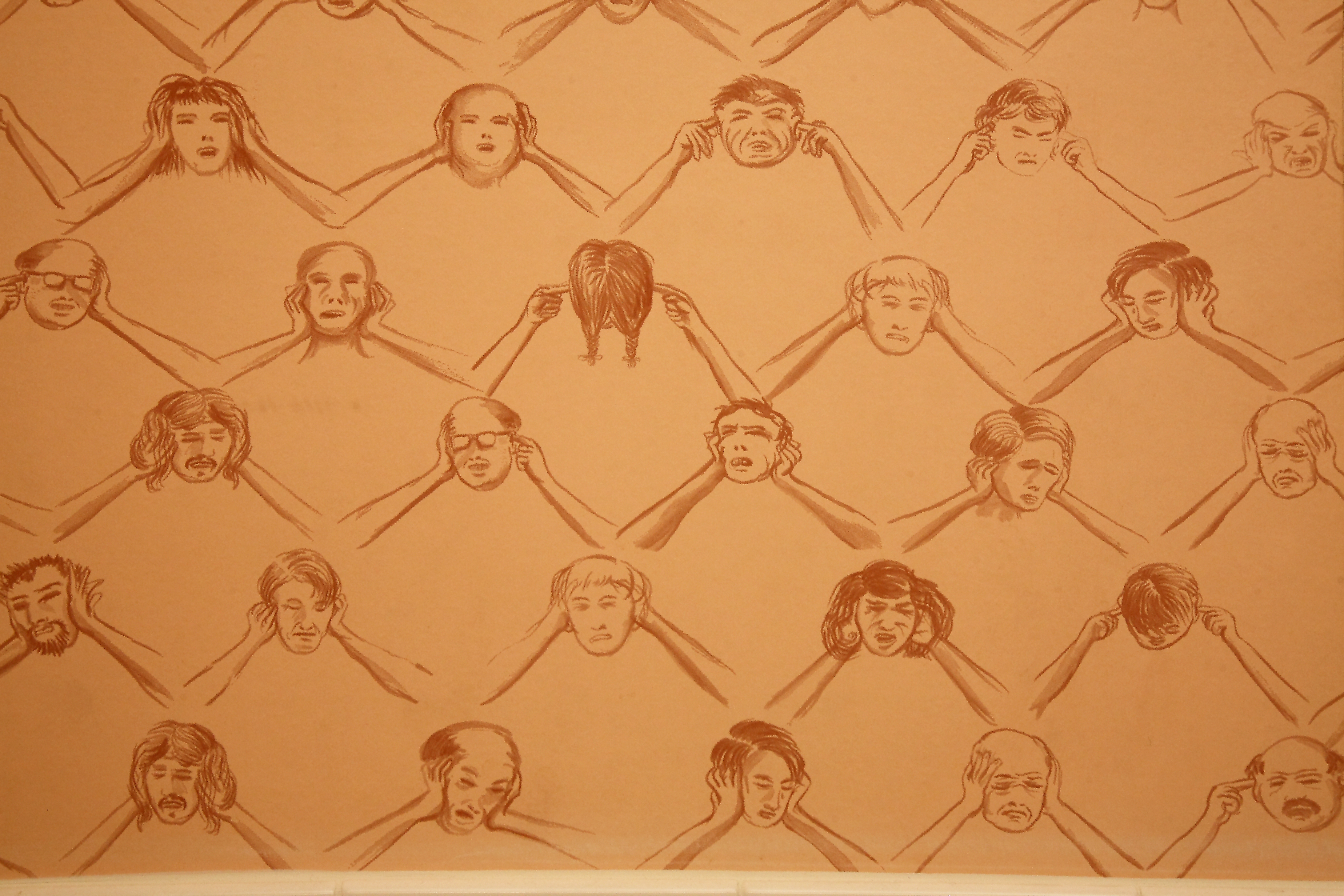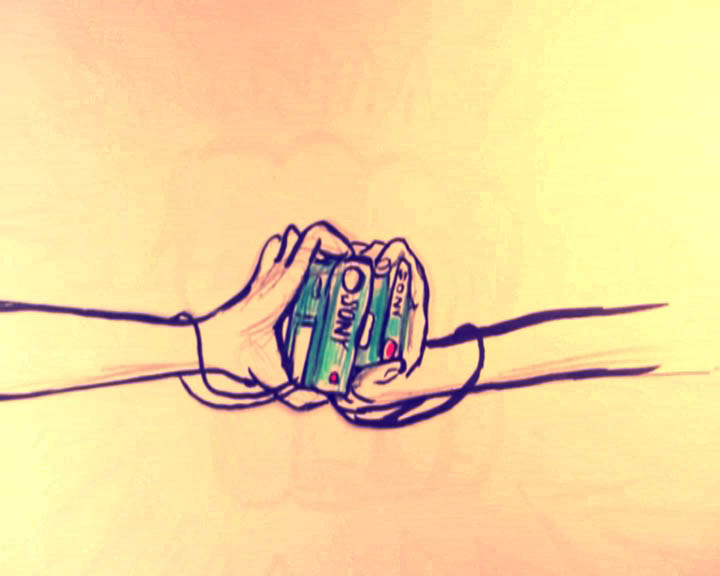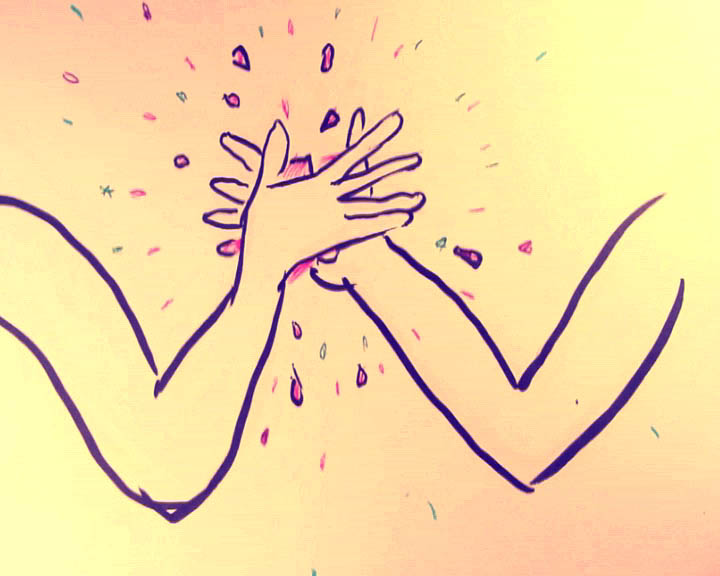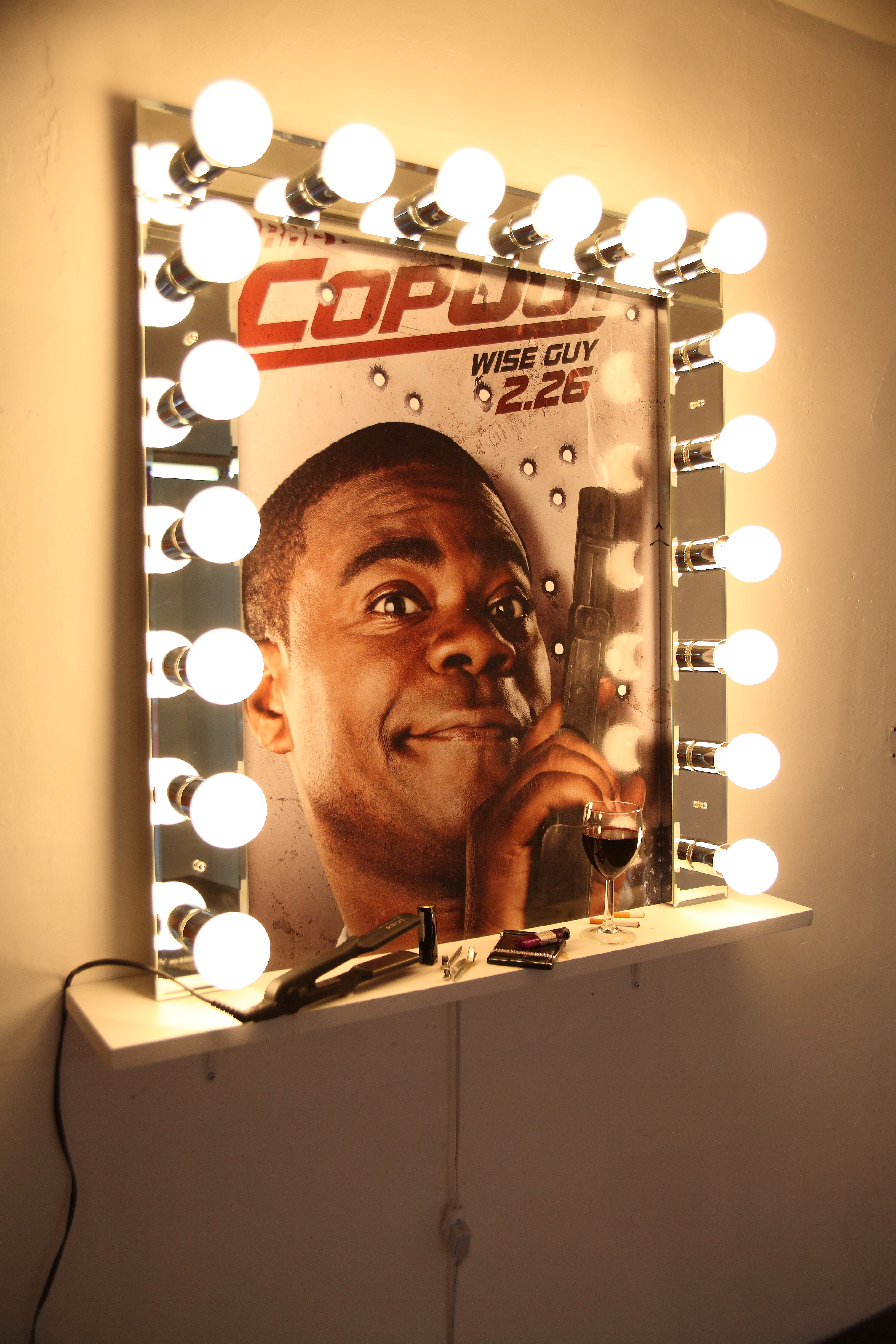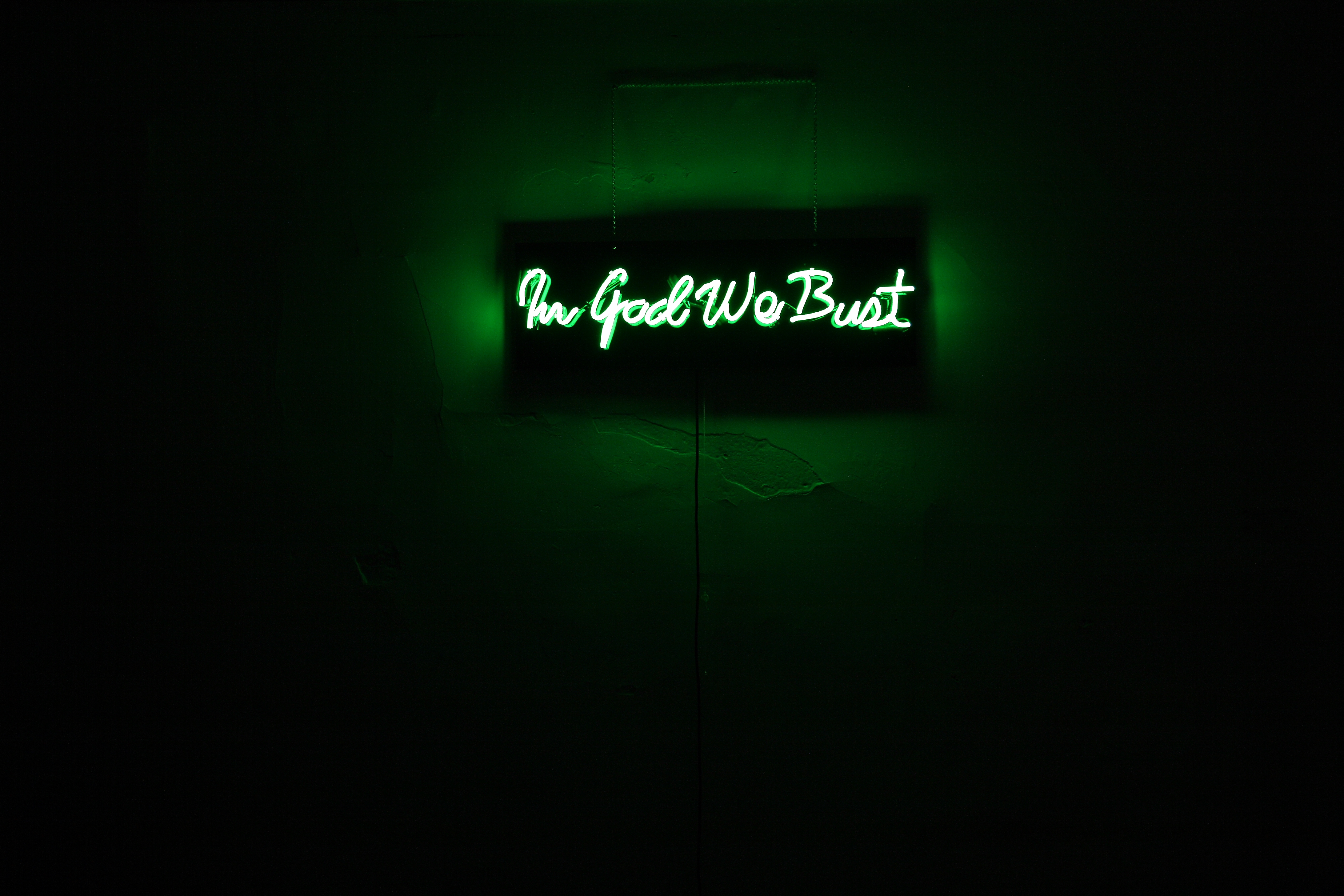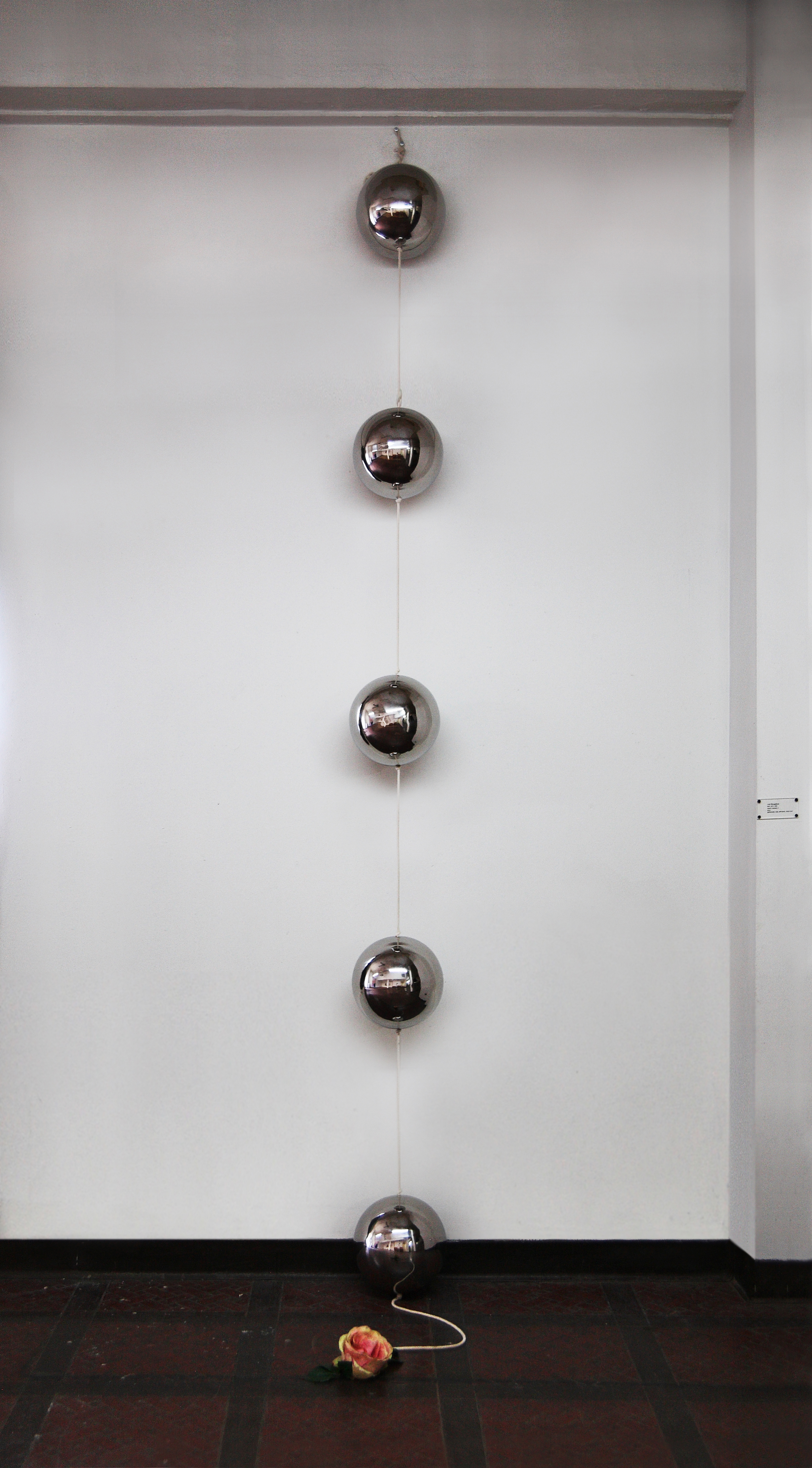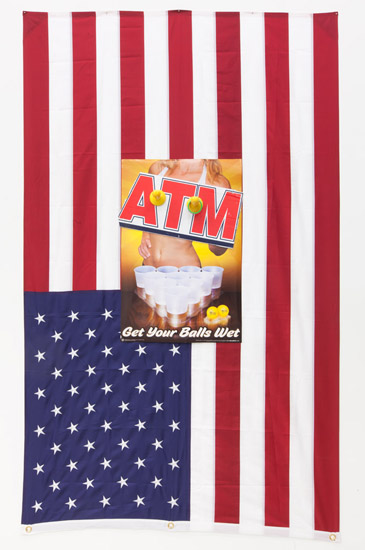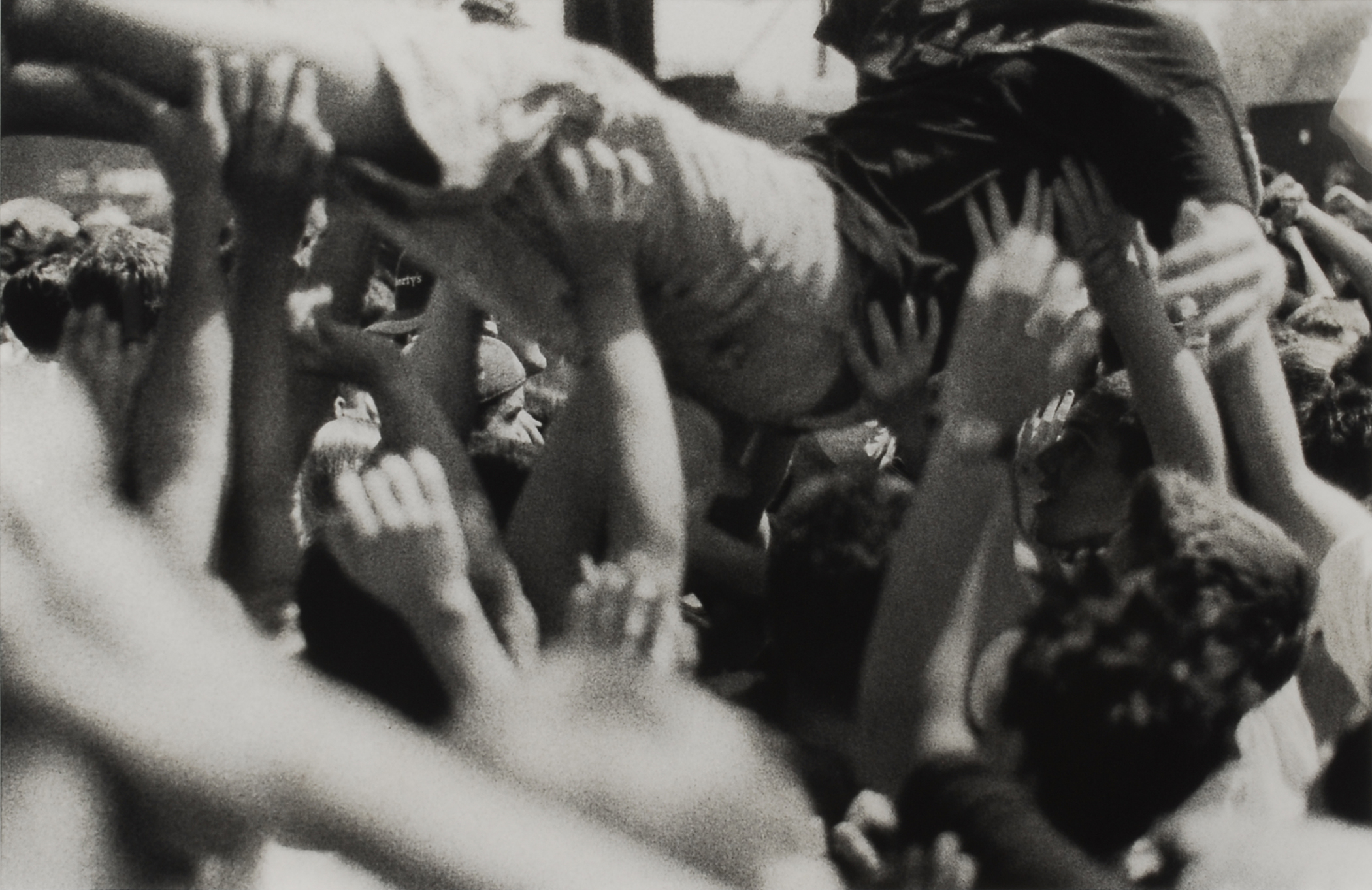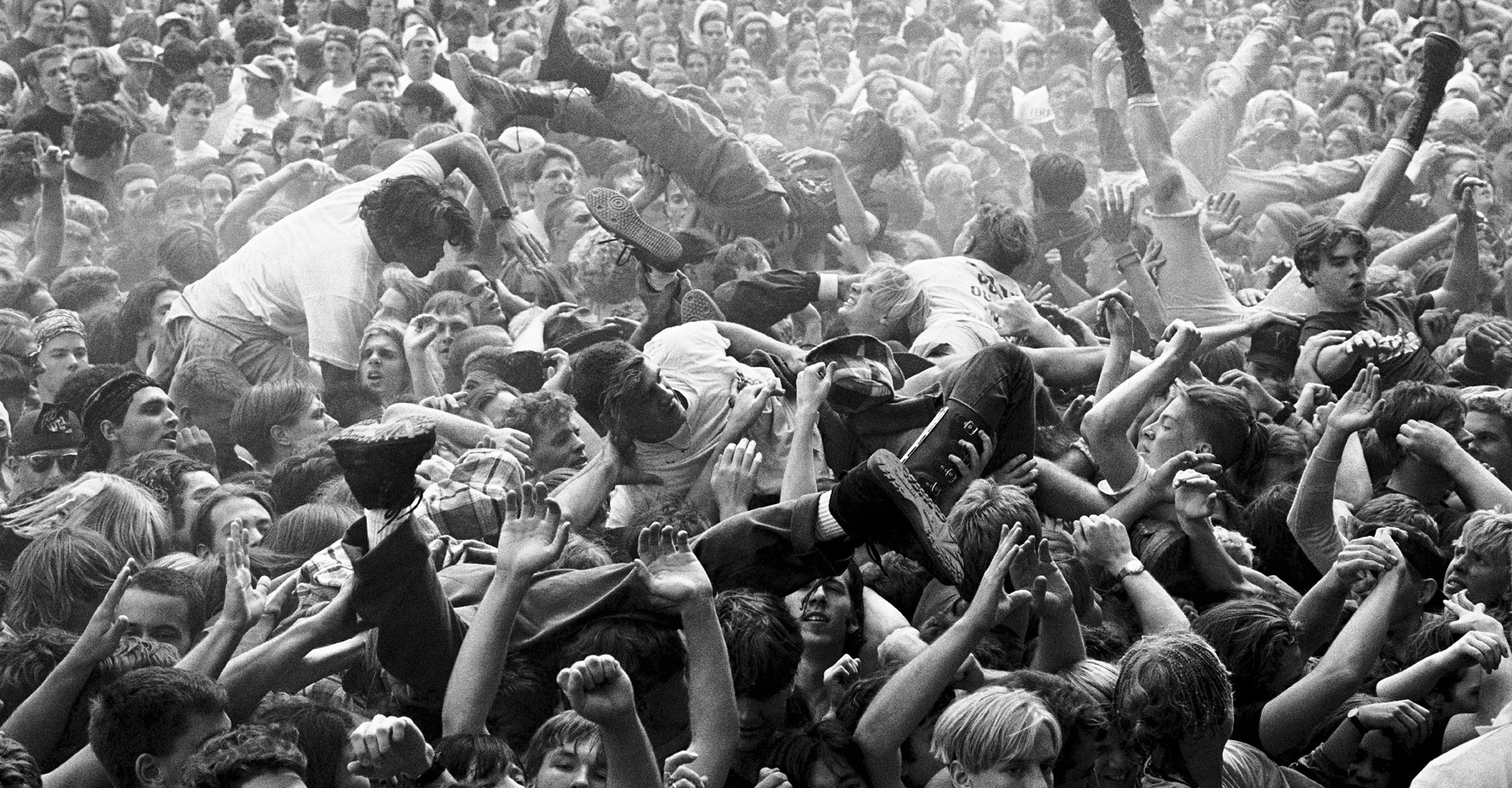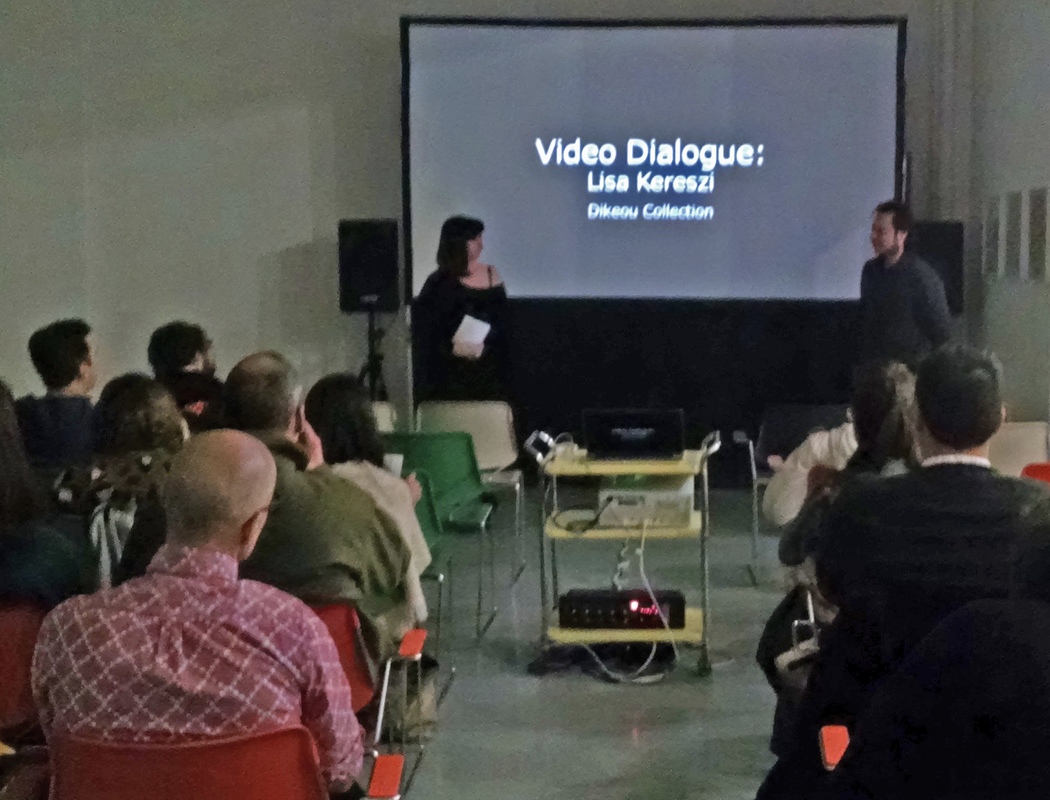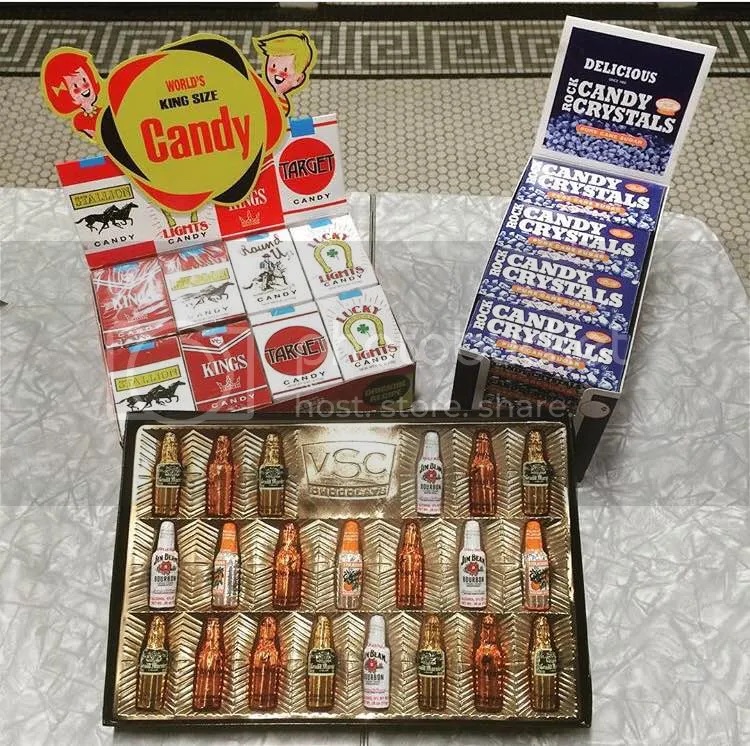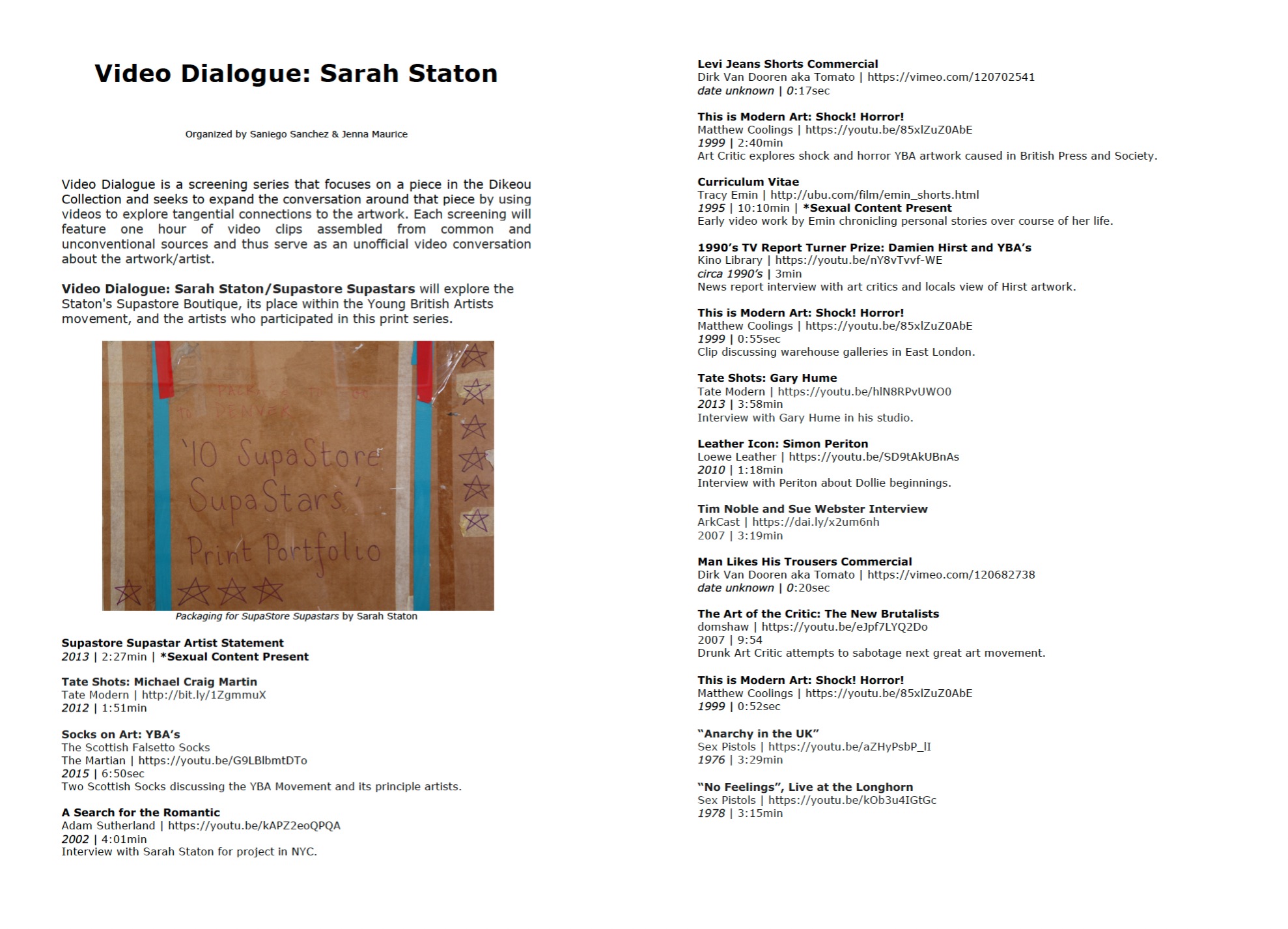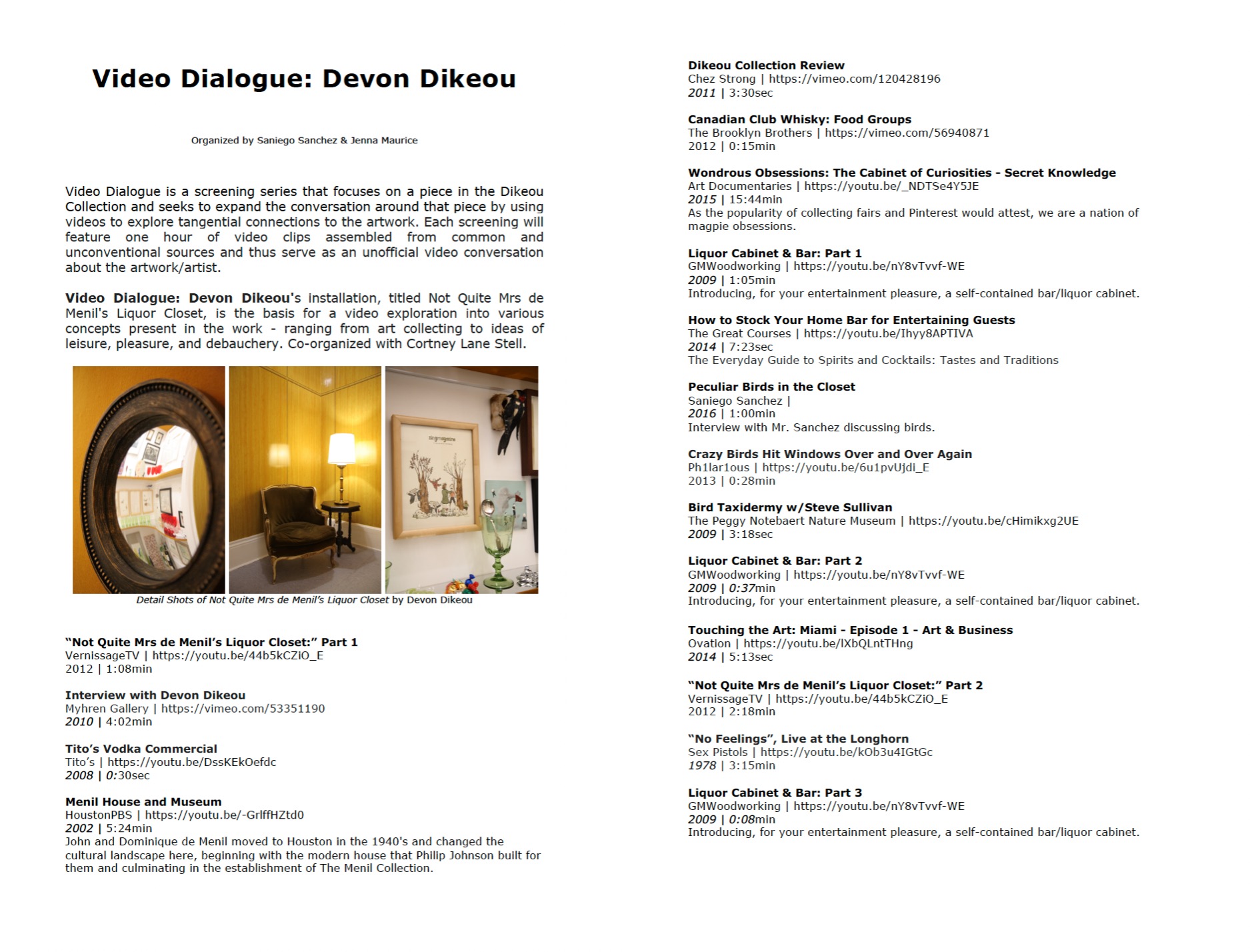Dikeou Collection Program Recap/Update: Family Saturday Workshop
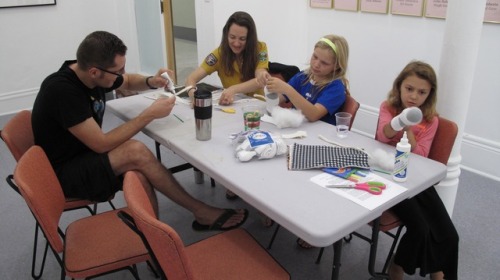
With spring comes flowers, birds, glimmers of summer, and sometimes one and a half feet of snow. But spring also brings back our Family Saturday Workshop series, which begin on Saturday, April 9. Inspired by a specific work or series in the collection, the Family Saturday Workshops aim to teach participants about materials and techniques used by an artist in the collection. The series begins with a look at Margaret Lee’s piece entitled Think About Tomorrow or Don’t from 2007, where kids and families will create their own wooden monument. These free workshops are fun for all ages. We invite you to bring friends and family to create your own Dikeou Collection inspired artwork.
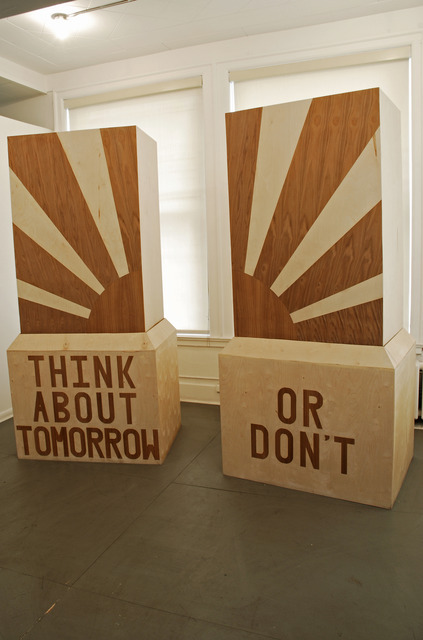
Margaret Lee, Think About Tomorrow or Don’t, 2007.
The most recent Family Saturday Workshops from the 2015 season included Momoyo Torimitsu’s storyboard and performance workshop in July, Rainer Ganahl’s scarf printing workshop in August and Misaki Kawai’s character building workshop in September.
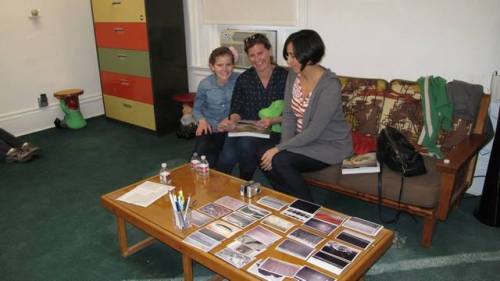
March 2015 Lee Stoetzel workshop.
Lee Stoetzel’s Accidental Tourism, is a series of close-up photographs captured from his studio windowsill, scratched glass and globs of paint that compositionally appear to be distanced landscapes. In this March workshop, participants took extreme close-ups of tile, wood grains and artwork textures from the collection to capture their own landscapes
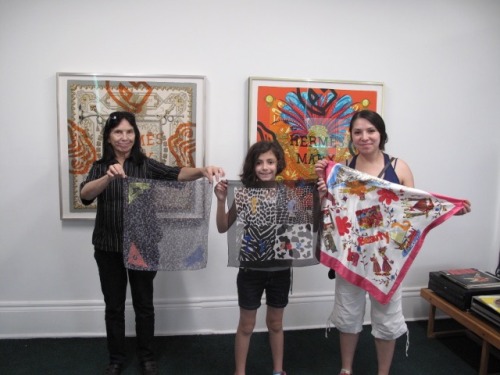
August 2015 Rainer Ganahl scarf workshop.
Rainer Ganahl’s Hermes Marx series includes a set of four Hermes silk scarves that have been screen printed over with his own logo “Hermes Marx”. In this workshop, participants were invited to print over the existing printed fabric of a scarf with their own design. This act of printing over the pre-existing design, not only changed the aesthetics of the scarf but then appropriated the object into the participant’s own piece of artwork.
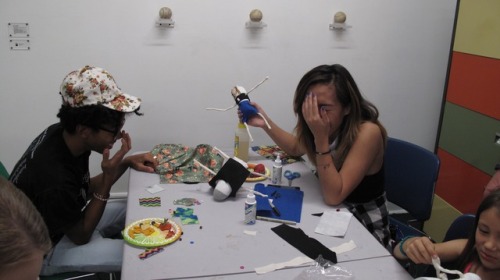
September 2015 Misaki Kawai character building workshop.
The last and most recent workshop was a Misaki Kawai character building workshop that had participants create themselves in the form of an iconic Kawai doll. Designing their own clothes, hairstyle and doll, participants learned about Kawai’s use of photography, sewing and doll-making in her work.
Looking to our 2016 Family Saturday Workshop series, we will teach workshops that include materials and concepts like cardboard, color theory, wood, paper mache and found objects to continue exploring the art practices found in the Dikeou Collection. Can you guess which artists use these materials?
The purpose of the Family Saturday Workshops is not only to get the audience thinking and talking about artworks in the collection, but to ignite their own creative process as well. Learning about how the objects in the collection are made, conceived or experienced allows a deeper understanding of the practice of art making and teaches new techniques to our audience. We have instructions to guide one’s way through the project but we also encourage the participants to incorporate their own ideas and techniques to the projects. Encouraging personalization incites the audience to not just replicate but to create from their own artistic energy. Teaching various techniques used in the collection also creates a relationship between the viewer and an art object. Conceptually understanding an artwork can be difficult, but if someone can physically create it themselves using a similar technique as the artist, the gallery-go’er is that much closer to understanding the work.
Keep an eye out for our 2016 Family Saturday Workshop press release, which will include an artist list with dates of the entire 2016 lineup.
-Madeliene Kattman

